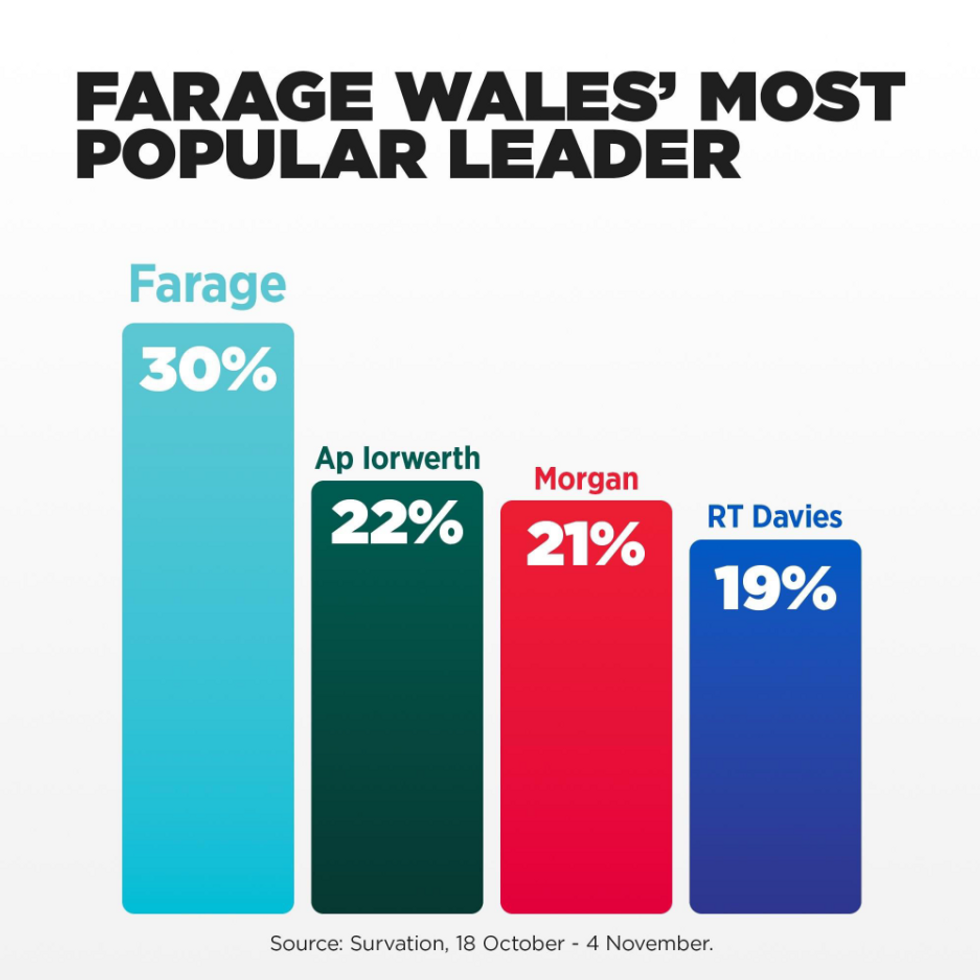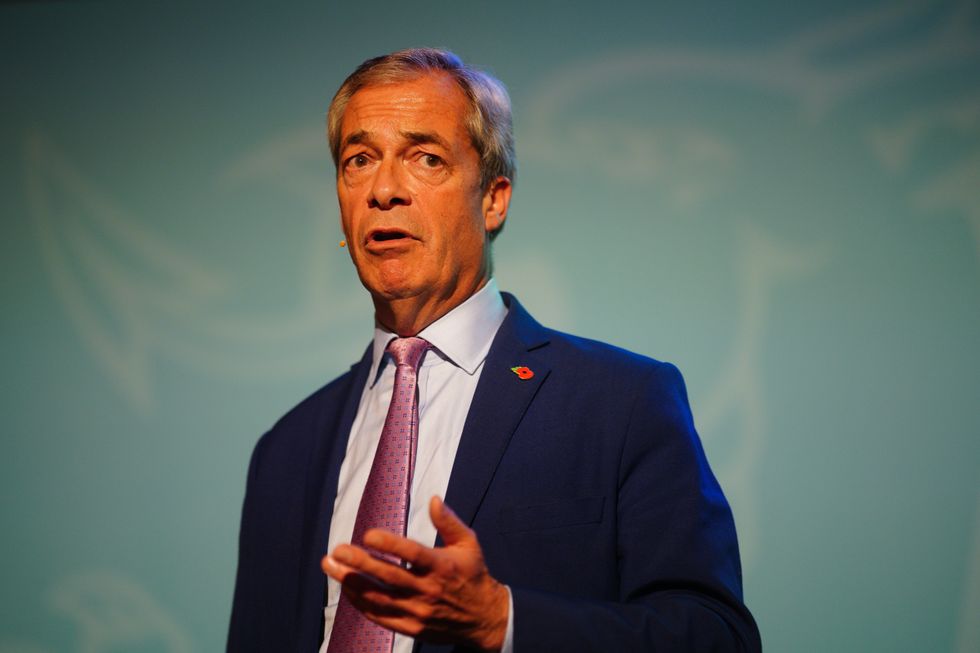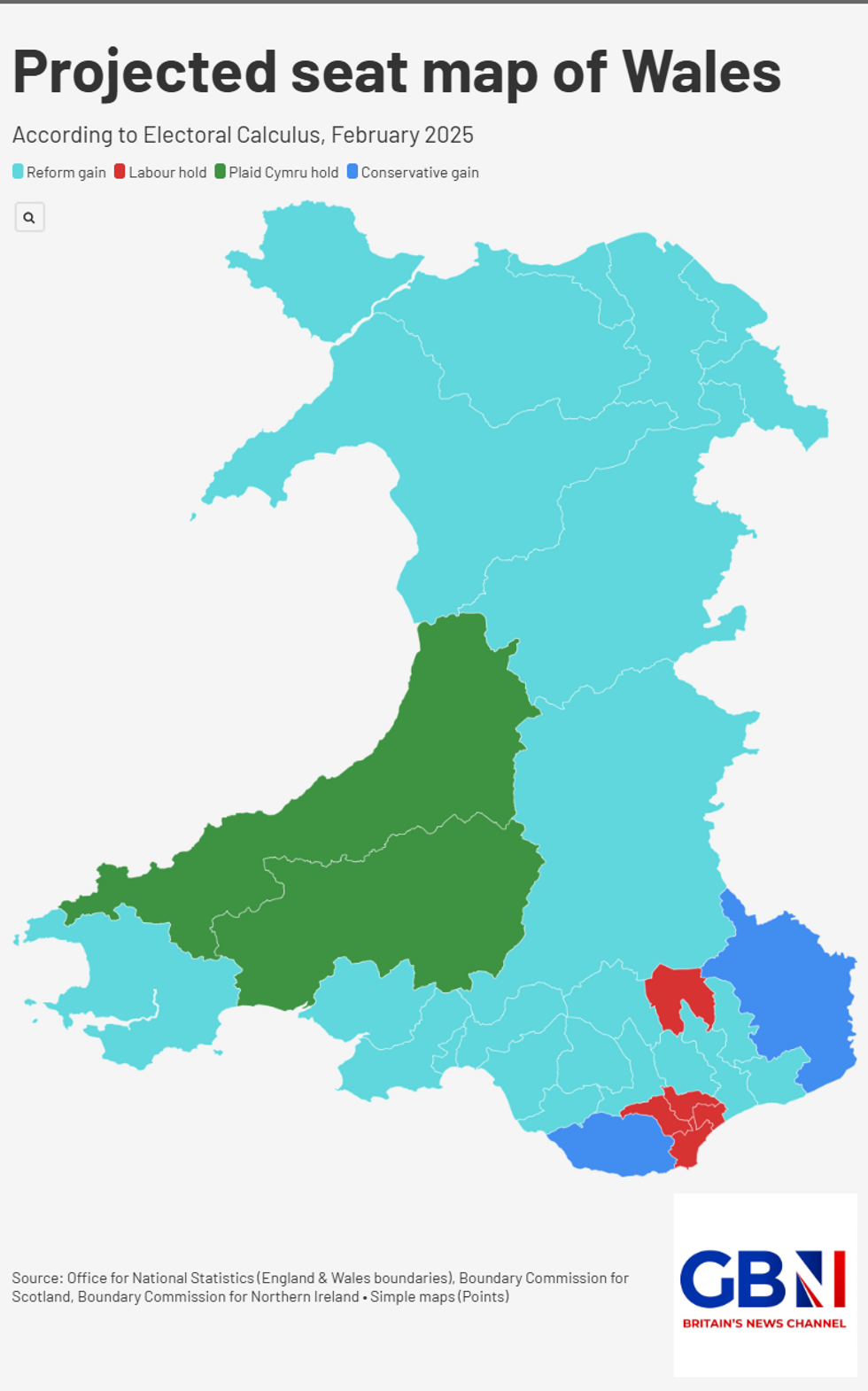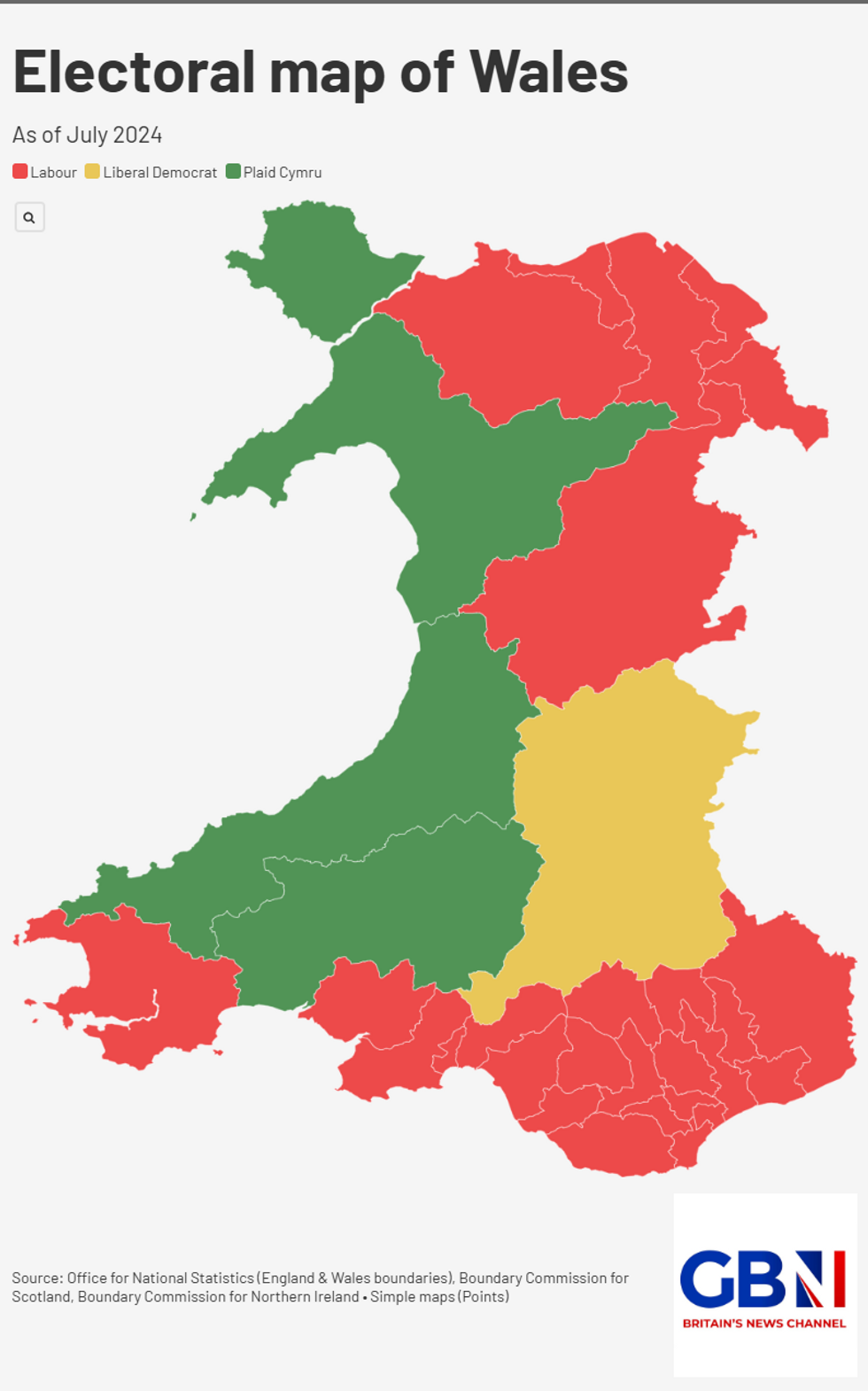REVEALED: The ‘secret’ tactic that could swing Britain’s next election for Reform as Farage looks to decimate Labour heartland
The ‘secret tactic’ that could swing Britain’s next national election in Reform’s favour has been revealed.
National elections for Wales’ parliament are due in 15 months (May 2026) and successive polls have shown Reform to be neck and neck with Labour.
These polls are remarkable as they buck one hundred years of history. Not only has Keir Starmer’s party ruled Wales devolved parliament since devolution began in 1999, but it has also returned a Labour majority in Westminster since 1922.
But with NHS waiting lists spiralling and educational outcomes for children the lowest of the UK’s regions, Welsh voters appear to be abandoning the voting habit of several lifetimes.
And it’s Reform who is benefitting. Despite being led by Englishman Nigel Farage, the Brexit-supremo has ‘cut-through’ to Welsh voters in a way the Tories, Plaid Cymru and the Lib Dems have been trying and failing to do for a century.
Commentators have highlighted how exploiting ‘brand Farage’ will be key to Reform’s electoral chances in May 2026.
This is where the ‘secret tactic’ comes in, as was highlighted by veteran Welsh commentator Will Hayward.
According to Welsh electoral law, parties can list up to ten descriptions on the electoral commission website. Crucially, these will appear alongside names on ballot papers.

In 2015, when Green Party leader Leanne Wood was at the peak of her popularity, the Green Party listed its name on the ballot as ‘Leanne Wood’s party’.
There is nothing stopping Reform listing themselves as ‘Nigel Farage’s party’ when it comes to elections in May 2026.
Given the Reform UK leader is more well-known than any Welsh politician several times over, it is highly likely the party will utilise his name for the ballot paper.
For voters still not one hundred per cent sure who they are voting for when they visit a polling station or fill in their postal vote, the appearance of Nigel Farage’s name may sway them.
In a time of general political apathy (turnout in Wales in July’s General Election was 59 per cent) voters will instantly recognise the name ‘Farage’ and know what he, and therefore Reform, stands for.
This is not the case for any other political leaders and their parties in Wales whose names and policies aren’t so instantly recognisable.

Another tactic Reform could employ to sway the elections in Wales regards TV leaders’ debates scheduled in the run up to the Welsh elections.
While the rules are unclear, there is currently no obvious evidence that prevents Farage from leading Reform in a TV debate, despite the fact he is a sitting Westminster MP and will not lead Reform in Wales.
On that note, commentators have also highlighted the shocking revelation that Reform will not be naming a leader in Wales until after the elections.
This poses a huge question for Reform voters who are being asked to vote for Nigel’s party without knowing who will lead it (and therefore lead Wales if it becomes the biggest party).
It would be like the Conservatives or Labour not choosing a leader before a general election.
Yet despite not announcing a leader, Reform continue to score highly in polls of Welsh opinion.
The most recent Senedd poll of Wales put Reform equal with Labour on 31 seats each (of a possible 96). Pollsters Beaufort research put the Conservatives on 17, Plaid Cymru on 16 and the Lib Dems on one.
That would mean Labour would not be the outright biggest party in Wales’ parliament for the first time since the Senedd was founded in 1999.
UK wide Westminster polls have also found Reform to be surging in Cymru. Last week, a ‘mega poll’ by Electoral Calculus projected Reform to win 23 of Wales’ 32 Westminster seats, wiping out Labour for the first time in 100 years.
Plaid Cymru and the Conservatives would win two seats each, the former in Ceredigion Preseli and Caerfyrddin and the latter in Monmouthshire and Vale of Glamorgan.

Keir Starmer’s party would lose 23 of its 27 seats (85 per cent of its representation) in a catastrophic and totally unprecedented wipeout.
Electoral Calculus’ research shows even ‘deep Labour’ areas like the valleys are abandoning the habit of several lifetimes and flipping to Reform.
Aberafan Maesteg, where Labour’s Stephen Kinnock triumphed in July by 10,354 votes, would fall to Reform, as would Pontypridd, where Labour’s Alex Davies-Jones cruised to victory by 8,402 votes.
Even Plaid Cymru, the left wing, Welsh nationalist party who are dominant in west and north Wales, face losing out to Reform.
Dwyfor Meirionnydd and Ynys Môn, two of their four seats, would fall to Farage. This despite Liz Saville Roberts winning a 15,876-vote majority in the former constituency last July.
The only seats Labour would hold onto are the four Cardiff seats and Blaenau Gwent and Rhymney.
LATEST FROM MEMBERSHIP:
- Reeves could go after YOUR ISA: Chancellor scrambles to raise cash after fiscal headroom ‘vanishes’
- Reform WINS landslide in Labour stronghold – but what does this mean for Farage’s party?
- Reform just came up with a MAJOR vote winning policy – watch the Tories follow – Kelvin MacKenzie

It comes after Reform UK scored a huge electoral win deep in the South Wales Valleys on Friday.
Voters in the Trevethin & Penygarn council ward in Torfaen, South Wales, abandoned the habit of several lifetimes and backed Reform.
Farage’s party scooped 47 per cent of the vote, but more impressive than that was the size of the collapse in socialist support.
Labour mustered just 26 per cent of the vote as their support crumbled by whopping 49.2 per cent.
This despite Labour being returned with 76 per cent of the vote the last time Trevethin & Penygarn voted.
In the wider Westminster constituency, Torfaen has voted red since it was formed in 1983, most recently returning Nick Thomas-Symonds with a 7,322-vote majority.
Senedd elections are due in May 2026 while local elections in Wales are due in May 2027.
Welsh Labour and Reform were contacted for comment.

